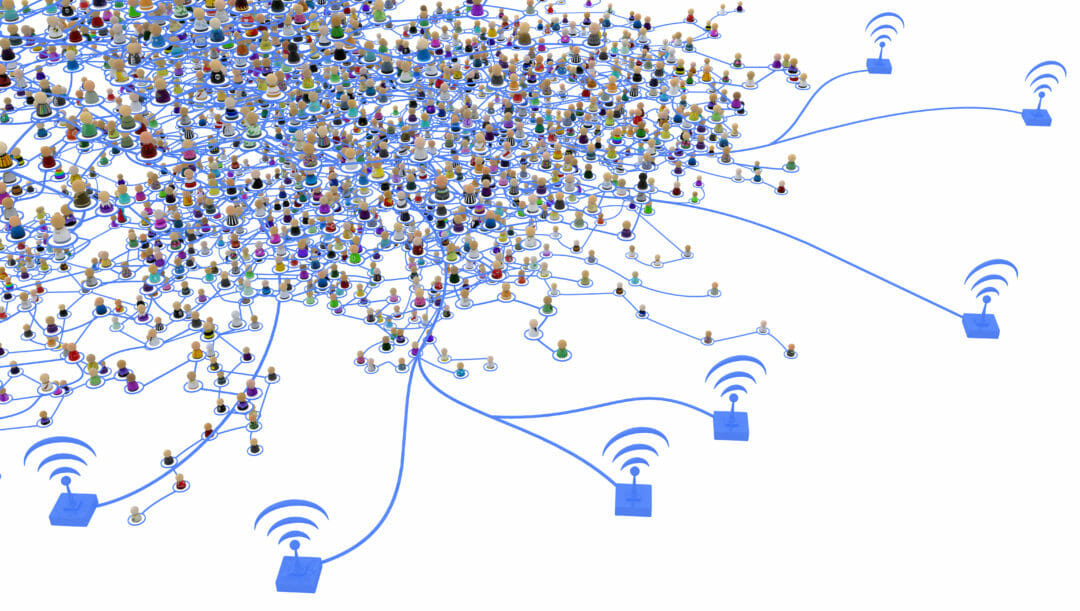Recent projections from Juniper Research put the number of IoT connections at 83 billion by 2024. It’s an eye-watering figure, and although similar predictions from other analysts are often a little more conservative, it speaks to just how influential IoT will be at the edge for businesses across sectors over the coming decade.
The business benefits promise to be as vast and varied as the industries where IoT devices will be found. Access to more real-time data across supply chains, factories and smart cities will facilitate efficiency gains at each step of every process, enabling better service with lower costs.
The key point here is the data. As businesses increasingly embrace IoT and connecting non-traditional devices to the network, be they digital signs, point of sale devices, heart pumps, facilities equipment, robots, autonomous machines or whatever else, these devices will all need to communicate with each other at the edge, as well as with cloud applications.
It’s not about cloud vs edge, it’s about connections
While the benefits promised by IoT are many, the data created by IoT devices at the edge will drive an exponential increase in traffic traversing the network infrastructure, which in turn could negatively affect the quality of experience to users and IT organisations. To fully facilitate the increasing uptake of the network edge, organisations must look to the transformation of their wide area networking infrastructure to support its use.
New network for new needs
The key reason businesses may not be prepared for IoT is that they are still reliant on a traditional, router-centric WAN approach optimised for branch to data centre communications. While even in its heyday it was inefficient and handled internet traffic poorly, it was acceptable as the majority of WAN traffic was from client or server applications, whereas internet was primarily used for best effort services.
This approach is no longer fit for purpose, as even before the imminent explosion of IoT devices, most WAN traffic is already destined for the cloud. If businesses want a viable network infrastructure for the coming decade, they’ll have to look beyond such ageing WAN solutions and towards more advanced software-defined WAN (SD-WAN) infrastructure, especially as organisations increasingly shift applications from the data centre to the cloud.
SD-WAN acts as a key enabler of IoT business initiatives based on four key characteristics:
Security – IoT devices have come under increased scrutiny for the security risk they can potentially pose. In an advanced SD-WAN, IoT traffic can be isolated from all other application traffic in accordance with unique security policies. This not only reduces the possible attack surface, but ensures that, even if the worst were to happen, the network can still continue delivering other application traffic in the event a WAN link is compromised by a DDoS attack.
From doorbells to nuclear reactors: why focus on IoT security
Troubleshooting – SD-WAN can take the guesswork out of problem resolution. With so many IoT applications set to be running on a network, real-time visibility will be key. Metrics around bandwidth consumption will need to be pulled at a drop of a hat in order to make troubleshooting as efficient as possible and to set up preventative measures to ensure service levels are maintained.
Orchestration – with a surge in the number of connected devices, applications and users, a comprehensive, centralised orchestration approach is needed in order to make sense of all these moving parts. With in-built intelligence, a network that that continuously adapts to deliver the highest quality of experience to the business and users will be critical to success.
Adaptability – A centrally managed SD-WAN enables network managers to quickly make changes, add new locations or new applications without the overhead of configuring changes on a manual device by device and site-by-site basis, thereby enabling them to be more responsive to the business.
Speaking more broadly, cloud-based computer processing must be scaled up or down in alignment with changing requirements at the edge, and this requires a dynamic network. An advanced SD-WAN that leverages low cost, but high-speed broadband connectivity could enable branch and remote office users to better harness the power of public cloud computing instances, all whilst maintaining the performance, security and availability required to handle advanced IoT applications.
The bleeding edge – AI
This is all just for the time being however, and the upcoming challenges of disruptive change in the enterprise, such as IoT, will demand more than current SD-WAN solutions are equipped with.
Some SD-WANs are emerging that apply AI to fill in network services with better context and connectivity. These, in essence, would be ‘self-driving’ wide area networks that have the capability to detect changing conditions and automatically make necessary adjustments before any bandwidth issues manifest as problems. If this is indeed the future for networks, it would mean substantial productivity gains and cost savings to IT and network operations teams.
Survival of the fittest: why asset managers need to embrace AI disruption
Embedding automation and machine learning at the edge is the future, and will empower a network that, through ‘speaking’ to the edge devices sitting in the branch offices, i.e. IoT devices, will get smarter every day. Combined with other multi-level intelligence, the IoT puzzle could well be solved, policy orchestration across a huge number of devices and applications could be completely automated. If businesses want to take advantage of IoT, they’ll need to take a long hard look at their network edge infrastructure and prepare to invest if it’s not fit for purpose.











